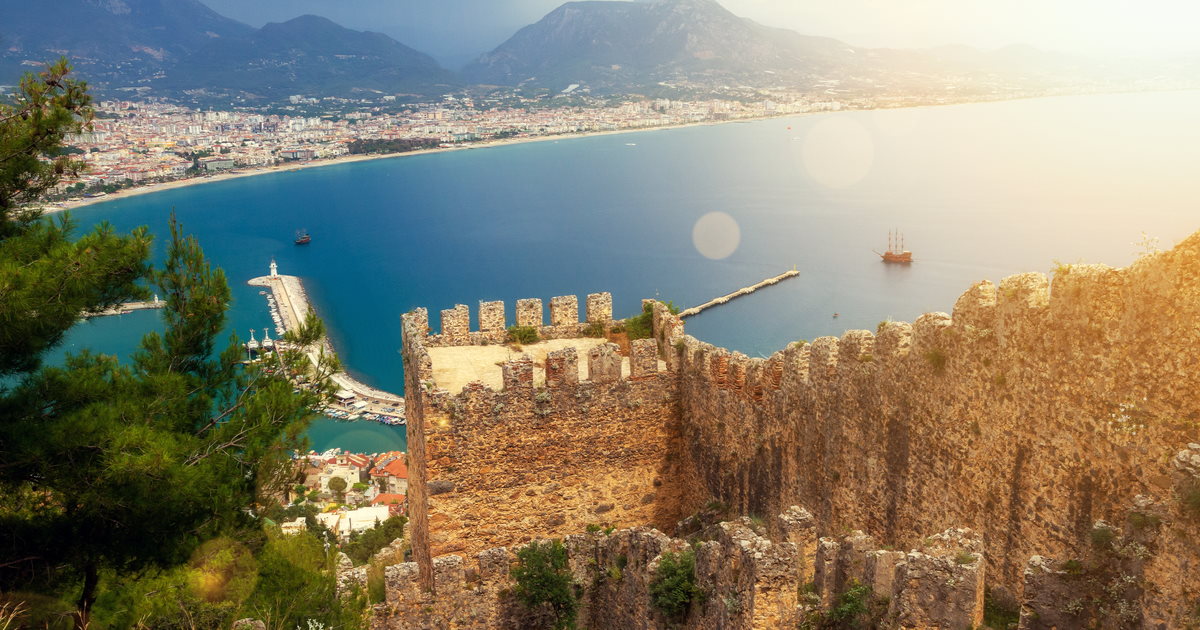Every aspect of Alanya is very rich with historical heritage. However, you don't have a lot of chances to visit cultural places in Alanya. Although the best cultural museum of the region is the Antalya Museum, followed by the Side Archaeology Museum, the Alanya Archaeology Museum is the best witness of this heritage and is located in the heart of the city.
In this article, you will find all the information you need for your visit to the Alanya Archaeology Museum, including what can you do, how can you get there, how to access the museum, and much more useful information.
What Can I Do at the Alanya Archaeology Museum?
The Museum Garden
The garden of the museum is arranged as an open exhibition area that includes many gravestones and sarcophagi.
Sarcophagi: In the garden of the museum, you will see various sarcophagi in different styles.
Amphoras: It is possible to see the materials used in olive oil production as well as amphoras in ancient times.
Osthoteks: These are small sized sarcophagi that are thought to be unique to Anatolia. These "small sarcophagi" have special compartments and are where the ashes of bones or a dead person are placed after being cremated. They are decorated with garland and lotus motifs.
Ottoman Tombstones: In the museum garden, there are Islamic gravestones belonging to the Seljuk and Ottoman period, as well as some inscriptions.

Museum Interior
The museum consists of two sections: archeology and ethnography. Here are the artifacts you shouldn't miss.
The Statue of Heracles: The bronze statue of Heracles dates back to the 2nd century and is the symbol of the museum. It's height is 52 meters and it is exhibited in a separate hall.
Floor mosaics in the Heracles Hall: On the floor of this hall, mosaics belonging to the Roman period brought from the ancient city of Syedra are exhibited. There is a mosaic depicting Hylas (a friend of Heracles) being kidnapped by the nymphs.
Coins: In the museum collection coins used in the Archaic period from 7th century BC until the 15th century are exhibited.
Ships & Maritime Hall: There are many ancient seamanship artifacts, such as amphoras, fishing hooks, weights, and an ancient primitive boat specimen.
The Pegasus Horse dating back to the 2nd century is a remarkable work in this hall. It's a famous character in Greek mythology.
Etnography Section: See a traditional Alanya house with local clothes, jewelry, carpets, and various objects used in daily life. There are beautiful examples of a handwritten Koran and calligraphy.

Entrance, Tickets, and Tours
How to Get to the Alanya Archaeology Museum
The Alanya Archeology Museum is located in the very center of Alanya, on Ismet Hilmi Balcı Street behind the Alanya Castle and Damlataş Cave.
- Bus: You can take the Alanya-Konaklı bus numbers 1, 101, and 50 to get the museum.
FAQ (Frequently Asked Questions)
The Alanya Archeology Museum is located in the very center of Alanya, on Ismet Hilmi Balcı Street, behind the Alanya Castle and Damlataş Cave.
Bus: You can take the Alanya-Konaklı bus numbers 1, 101, and 50 to get the museum.
The Archaeology Museum of Alanya exhibits bronze, marble, terra-cotta and glass artifacts, mosaics, and coin collections belonging to the Archaic and Classical periods, and also Turkish Islamic works of art from the Seljuk and Ottoman Periods.

The History of the Alanya Archaeology Museum
The museum was opened to visitors in two stages in 1967 for the protection and display of archaeological and ethnographic artifacts.
At the first opening of the museum, there were not any ruins found in the region yet, but it explained the Anatolian Chronology of the Old Bronze and Urartu Periods.
The works belonging to the Phrygian and Lydian Periods were brought from the Anatolian Civilizations Museum in Ankara and presented for exhibition in the Archeology section.
Check out more museums in Antalya here.

